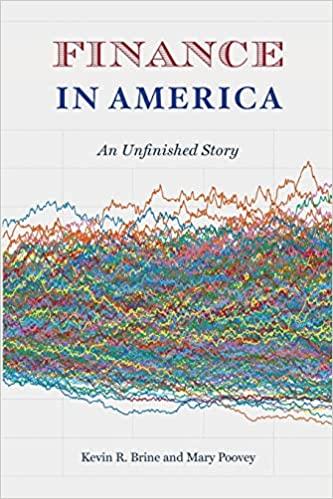Question
Romboski, LLC, has identified the following two mutually exclusive projects: Year Cash Flow (A) Cash Flow (B) 0 $ 57,000 $ 57,000 1 33,000 20,300
Romboski, LLC, has identified the following two mutually exclusive projects: Year Cash Flow (A) Cash Flow (B) 0 $ 57,000 $ 57,000 1 33,000 20,300 2 27,000 24,300 3 19,500 29,000 4 13,400 25,300 Requirement 1: (a) What is the IRR for each of these projects? (Do not round intermediate calculations. Enter your answer as a percentage roundedto 2 decimal places (e.g., 32.16).) Internal rate of return Project A % Project B % (b) If you apply the IRR decision rule, which project should the company accept? Requirement 2: (a) Assume the required return is 13 percent. What is the NPV for each of these projects? (Do not round intermediate calculations.Round your answers to 2 decimal places (e.g., 32.16).) Net present value Project A $ Project B $ (b) Which project will you choose if you apply the NPV decision rule? Requirement 3: (a) Over what range of discount rates would you choose Project A? (Do not round intermediate calculations. Round your answer to 2 decimal places (e.g., 32.16).) Project A @ % (b) Over what range of discount rates would you choose Project B? (Do not round intermediate calculations. Round your answer to 2 decimal places (e.g., 32.16).) Project B @ % (c) At what discount rate would you be indifferent between these two projects? (Do not round intermediate calculations. Enter your answer as a percentage rounded to 2 decimal places (e.g., 32.16).) Discount rate %
Step by Step Solution
There are 3 Steps involved in it
Step: 1

Get Instant Access to Expert-Tailored Solutions
See step-by-step solutions with expert insights and AI powered tools for academic success
Step: 2

Step: 3

Ace Your Homework with AI
Get the answers you need in no time with our AI-driven, step-by-step assistance
Get Started


